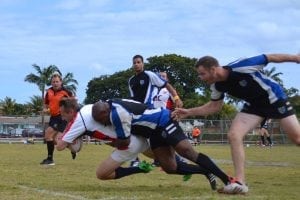Playing footy this season? Check your boots
- Edgard Diaz
- March 25, 2019
- News

“The key thing to do first is to understand your body’s biomechanics and foundations, which are your feet, then get advice on the right boots to suit you and the surfaces you are playing on,” he said.
“When I used to play I received many injuries but always knew this was part of the program, but I also saw a podiatrist regularly, trained hard using the exercises recommended and wore the correct boots to avoid injury too.
“Overall many feet and leg injuries are due to incorrect footwear, running technique, overuse and the ground surface the game is played on,” said Dr Najjarine.
So as the football season kicks off, Dr Najjarine said it is time to do the checks and balances for all who play the sport – whether professional or amateur.
“Your gait can change over time so I look at the biomechanics of a patient and advise where there are issues, suggest the correct boots for the sport and field, or if other treatments are required, prescribe these too. So if your children are playing footy this season it is even more important to do this as their feet are changing all the time,” he said.
“Football is a multi-directional, ballistic sport. The foot and lower limb accept huge loads in excess of three times body weight with running, jumping, side-stepping and kicking a football.
“Correct training techniques are very important and my experience with professional players is that preparation and attention to detail is vital to prevent injury,” said Dr Najjarine.
“Professional footballers will have different shoes and football boots for different weather and grass conditions. They may use up to 10 different boots in any given season. Although this is not the same for the amateur footy player, having a good pair is still important.”
In football, common foot and limb issues are Achilles tendon and calf muscle injuries; stress fractures in the feet and shins; growth plate injuries of the heel bone in children; soft tissue strains like plantar fasciitis – the major muscle under the foot; and ankle sprains which can take a player off the field for weeks.
Key ways to avoid such injuries are: focused muscle strengthening exercises; correctly fitted boots and trainers when off the field; orthotics to stabilise the feet of players with biomechanical issues; power taping to support and guard muscle performance during the game and help stabilise lower limbs; and proper warming up before playing or training and regular stretching of the limbs and feet; and consult a podiatrist who is experienced in sports injuries. They will provide a lower limb-foot and shoe assessment.
“Remember injury can always be avoided. When playing a touch sport like football, statistics show that the lower extremity and the foot are more prone to injury than any other part of the body. My key advice is to never play with pain and use ice after the game to reduce any swelling. But if you have foot and lower limb pain that persists, get professional advice from a podiatrist,” concluded Dr Najjarine.
At Dr Abbie Clinics we treat all sports conditions such as Achilles tendonitis, shin splints, plantar fasciitis, knee pain, foot pain and lower back pain, as well scoliosis, postural and gait problems.


